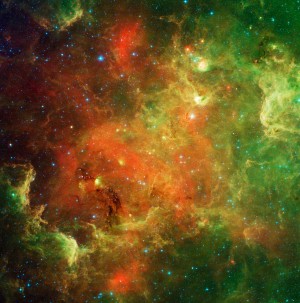Posts Tagged ‘Solstice’
Sky Tonight—April 13, Moon close to Regulus – a

Courtesy of EarthSky A Clear Voice for Science Visit EarthSky at www.EarthSky.org Tonight, the waxing gibbous moon shines close to Regulus, the brightest star in the constellation Leo the Lion. Regulus is considered to be the Heart of the Lion in Leo. Regulus is also one of the four “Royal Stars” of ancient Persia. These Royal Stars mark the four quadrants of the heavens. They are Regulus, Antares, Fomalhaut, and Aldebaran. Regulus: Heart of the Lion Four to five thousand years ago, the ... Full Story
EarthSky Tonight—December 8, Earliest northern

Courtesy of EarthSky A Clear Voice for Science Visit EarthSky at www.EarthSky.org The 2010 solstice comes on December 21, but the earliest sunsets for the northern hemisphere are around now. It seems paradoxical. At middle latitudes in the U.S. – and throughout the northern hemisphere – the earliest sunsets of the year come about two weeks before the solstice and the shortest day of the year. Everything you need to know about the solstice on December 21 Why isn’t the earliest sunset on ... Full Story
EarthSky Tonight—September 20, Fastest sunsets of

Courtesy of EarthSky A Clear Voice for Science www.EarthSky.org Comet Hartley 2 might brighten to binocular object by late September 2010 Does the sun set faster around the time of an equinox? The answer is yes. The fastest sunsets (and sunrises) occur at or near the equinoxes. What’s more, the slowest sunsets (and sunrises) occur at or near the solstices. This is true whether you live in the northern or southern hemisphere. By the way, when we say sunset here, we are talking about the ... Full Story
Earthsky Tonight—July 24,Why the hottest weather is

Courtesy of EarthSky A Clear Voice for Science www.EarthSky.org Look westward at nightfall to see three planets in the July evening sky. In their order of brightness, these worlds are Venus, Saturn and Mars. Venus outshines Saturn and Mars by leaps and bounds. Venus is the first “star” to pop into view after sunset. If you keep watching the western sky into early August, you will see these three form a tight cluster in the west after sunset. EarthSky’s meteor guide for 2010 By the way, ... Full Story
Earthsky Tonight—June 27: Latest sunsets of the year

Courtesy of EarthSky A Clear Voice for Science www.EarthSky.org For people living around 40 degrees north latitude, the latest sunsets of the year happen around now. However, in the southern hemisphere, at 40 degrees south latitude, it is the year’s latest sunrises that are happening around now. That is in spite of the fact that the longest (or shortest) day was about a week ago, on the June 21 solstice. To celebrate the late June sunsets, today’s sky chart shows the bright stars and ... Full Story
Earthsky Tonight Everything you need to know: June

The June solstice is your signal to celebrate the first day of summer in this hemisphere. South of the equator, winter begins. When is the solstice where I live? The solstice happens at the same instant for all of us, everywhere on Earth. However, our clocks say different times. This solstice takes place on Monday, June 21, 2010 at 11:28 Universal Time. To find the time of the solstice in your location, you have to translate to your time zone. Here is an example of how to do that. In the ... Full Story







